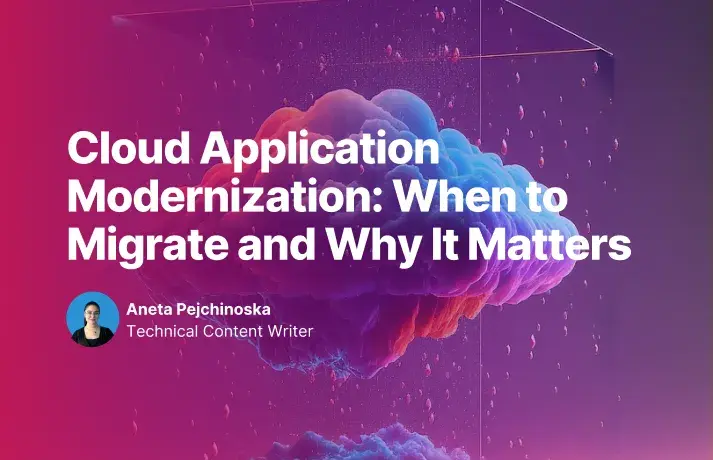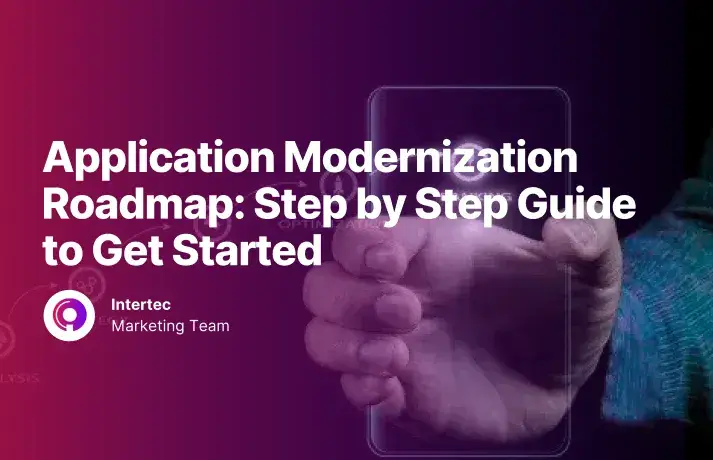Step 1: Conduct a Modernization Assessment
For your application modernization project to be successful, you need a comprehensive assessment of your existing legacy applications. Start with inventory and dependency mapping. Document everything in on-premises applications, integrations, and dependencies across your existing apps and cloud platforms.
Quantifying technical debt is your next step. Perform code quality analysis, test coverage, and architectural complexity assessments. Identify security vulnerabilities, unsupported frameworks, and areas where quick fixes have created fragile foundations within your application architecture.
Recognizing technical debt is essential because it creates barriers to modernization and increases long-term expenses. A survey reports that 92% of organizations admit they are burdened by technical debt.
Assess business value and TCO (Total Cost of Ownership): correlate technical data with business objectives. Answer these questions:
- What is the overall cost of ownership for each application?
- What revenue or business value does it support?
- What are the risks of not modernizing it?
These insights give you a prioritized list of legacy applications with a clear modernization strategy, separating the “must-modernize now” candidates from the “can-wait” ones.
Step 2: Define a Strategic Modernization Plan
Once your evaluation is complete, create a plan that connects application modernization strategies with measurable business outcomes. The plan should guide cloud adoption, software development, and modernization initiatives while providing quantifiable ROI.
Key considerations:
- Business goal alignment: Ensure your modernization strategy accelerates innovation, improves business operations, and optimizes costs.
- Budgeting and risk management: Anticipate blockers and include them in your modernization efforts.
- Cloud migration strategy: Decide whether a public, private, or hybrid cloud environment best suits your workloads and existing investments.
CTOs should define KPIs such as enhanced scalability, faster development cycles, or reduced operational overhead - all of which demonstrate the benefits of application modernization.
Step 3: Select the Right Modernization Approach
The well-known “7 R’s” framework offers common application modernization strategies, ranging from minimal effort to full transformation. Your choice, guided by your assessment, defines the course of your application modernization journey.
The divine seven:
- Rehost
- Replatform
- Refactor
- Relocate
- Repurchase
- Retire
- Retain
For example, application refactoring is ideal for those seeking scalability and cloud-native architectures, while rehosting is useful when time and resources are limited.
Selecting the right approach determines whether your application modernization projects are technically sound and economically viable.
We talk more on this in our previous post about the 7Rs of modernization; make sure to check it out.
Step 4: Implement the Modernization Plan
This is the execution phase where your app modernization plan becomes reality through code, configuration, and cloud services. Successful modernizing applications efforts depend on modern engineering and software development practices.
Key execution activities:
- Cloud migration execution: Choose between public, private, hybrid cloud, or multi-cloud cloud providers.
- Microservices and DevOps implementation: Break down monolithic applications into modular components to improve agility.
- CI/CD and continuous integration automation: Automate build, test, and deployment pipelines for rapid deployment.
Following Agile and DevOps methodologies ensures iterative rollout and minimal downtime while maintaining data integrity and enhanced scalability.
Step 5: Optimize Application Performance Post-Modernization
Modernization doesn’t stop after deployment. The dynamic nature of modern cloud platforms and cloud technologies requires continuous optimization.
Go beyond simple monitoring. Use observability tools that provide logs, metrics, and traces to evaluate system health. Leverage AI/ML insights and cloud-native security tools to automate tasks, forecast demand, and optimize workloads.
According to Gartner, by 2029, AI will dominate, accounting for 50% of cloud compute resources. This shift shows how modernizing legacy applications with modern infrastructure drives accelerated innovation and reduces operational overhead.
Step 6: Modernize the User Experience
User interface modernization should complement your application modernization process. Users expect speed, simplicity, and intuitive design - hallmarks of modern applications.
Legacy interfaces are often cluttered and slow, especially in on-premises infrastructure environments. By contrast, modern architectures emphasize accessibility, readability, and inclusive design.
Through legacy modernization, organizations can modernize existing apps to ensure consistency across platforms and create modern cloud solutions that meet customer demands while improving usability and engagement.
Step 7: Ensure Security and Compliance from Day One
Security is integral to every application modernization project. Modern environments require integrated, cloud-native security and advanced security protocols.
Best practices:
- Shift-left security: Embed testing early within continuous integration pipelines.
- Compliance management automation: Map GDPR, HIPAA, or FISMA into your cloud architecture workflows.
- Ongoing audits: Use dashboards to ensure data integrity and protect sensitive data.
This approach ensures modernization strengthens business processes, safeguards sensitive data, and minimizes regulatory risk.
Step 8: Upskill Teams with Tech Skill Development
Your technology investments are only as modern as your teams. To support modernization strategies, focus on tech skill development.
- Identify gaps in cloud computing, DevOps, and AI/ML.
- Encourage continuous improvement and certification programs.
- Collaborate with external experts in legacy application modernization and cloud migration.
This ensures sustainable growth and a successful application modernization strategy across your organization.
Step 9: Embrace DevOps and CI/CD for Continuous Delivery
DevOps and CI/CD pipelines form the backbone of modern software development. They ensure modernization efforts lead to agile, secure, and maintainable systems.
Key benefits:
- Seamless collaboration between development and operations teams.
- Reliable, automated pipelines for rapid deployment on modern cloud platforms.
- Continuous feedback loops that drive continuous improvement and accelerated innovation.
Conclusion: Leading Modernization as a CTO
As explored in this guide, modernization is the process of rethinking technology, architecture, and culture. It’s not a one-time activity - it’s an ongoing modernization journey that continuously improves business operations and delivers measurable business value.
CTOs who lead application modernization projects successfully ensure that modernization reduces operational overhead, enhances cloud scalability, and leverages modern cloud platforms to accelerate cloud adoption and optimize costs.
When done properly, application modernization doesn’t just update codebases - it transforms existing applications, on-premises infrastructure, and underlying hardware into modern cloud architectures capable of meeting future business needs.
If you’re ready to modernize and transform your existing apps, our team at Intertec can help operationalize every stage of legacy modernization - from assessment and cloud migration to CI/CD and managed cloud solutions. Fill out the form below and contact our experts today!







